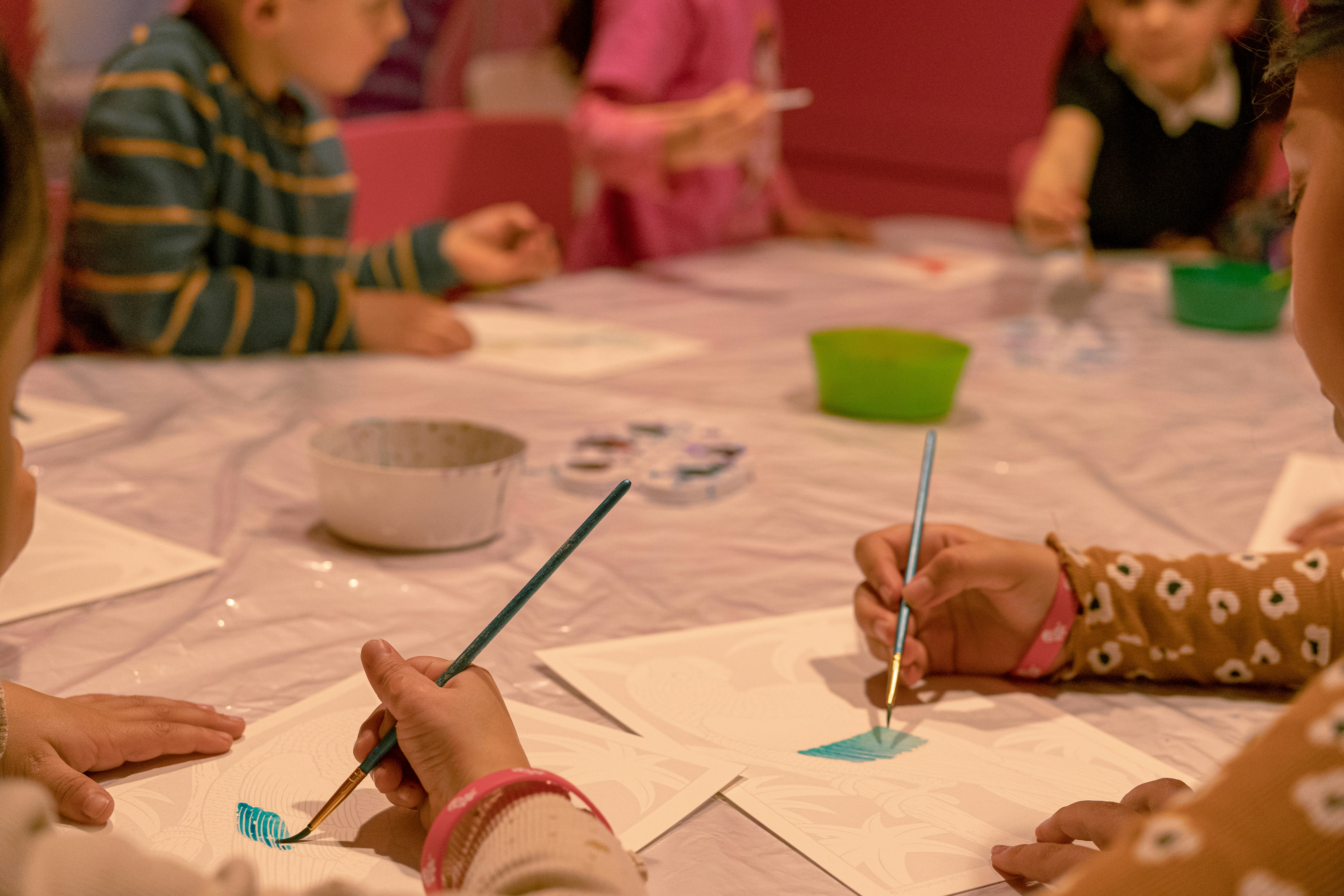Understanding the Importance of Art in Childhood Development
Art plays a crucial role in the holistic development of children, offering a multitude of cognitive, emotional, and social benefits. Engaging in painting activities, for instance, fosters creativity, allowing children to explore their imagination without constraints. This creative journey not only enhances their artistic abilities but also stimulates innovative thinking, which can be beneficial across various subjects and disciplines in their educational journey.
Furthermore, painting encourages the development of fine motor skills. As children manipulate brushes, mixing colors and applying paint, they engage their hand-eye coordination and dexterity. These skills are essential not just for art, but for daily tasks such as writing, typing, and even using tools as they grow older. The repetitive motions involved in painting help to strengthen the small muscles in their hands and fingers, setting a foundation for many physical activities in the future.
Emotionally, art serves as a powerful outlet for self-expression. Through painting, children can convey feelings that they may not have the words to articulate. This form of expression is particularly important as it helps them to make sense of their emotions, fostering emotional intelligence and resilience. The act of creating art can be therapeutic, providing relaxation and reducing anxiety, which is vital in today’s fast-paced world. When children create something of their own, it boosts their confidence and instills a sense of accomplishment.
Socially, participating in art can facilitate cooperation and communication. Group painting activities encourage children to work together, share ideas, and appreciate diverse perspectives. This collaboration cultivates teamwork skills, which are essential in school and beyond. Overall, the integration of art, particularly through painting, is paramount in supporting children’s development across multiple dimensions, making it a key area of focus for educators and parents alike.
Choosing the Right Picture Book for Painting Lessons
When it comes to instilling a love for painting in children, selecting the right picture book is fundamental. A thoughtful choice can not only inspire creativity but also serve as a practical guide to essential painting techniques. Key criteria such as the quality of illustrations, age appropriateness, and engaging narratives must be considered when choosing a resource for painting lessons.
Firstly, examine the illustrations within the book. High-quality, vibrant images can captivate young readers and ignite their interest in painting. Look for books that showcase a variety of artistic styles or techniques, encouraging children to experiment with their own creations. Books that feature famous artworks or diverse cultural artwork can also serve as excellent conversation starters about different painting styles.
Next, consider the age appropriateness of the picture book. Books aimed at the right developmental level will have text that resonates with children while explaining techniques in a clear and simple manner. For toddlers and preschoolers, brightly colored books with minimal text that introduce basic concepts of color and brush strokes may be suitable. As children mature, explore books that offer more complex themes or techniques, such as watercolor, acrylic, or mixed media. This staged progression ensures that children remain engaged and challenged at each skill level.
Furthermore, look for books that incorporate interactive elements. Some picture books invite children to paint along or provide prompts that encourage participation. Others might include removable pages or templates for tracing shapes, thereby enhancing the overall learning experience. Additionally, consider titles that are specifically designed to teach painting techniques, such as step-by-step guides that provide explicit instructions along with visual aids.
Some recommended titles to explore include “The Dot” by Peter H. Reynolds, which encourages creative expression through simple painting, and “Mix It Up!” by Herve Tullet, which offers a playful approach to understanding color mixing. By carefully selecting picture books that inspire and instruct, you can nurture a child’s artistic development and foster a lifelong appreciation for painting.
Techniques for Integrating Painting into Storytelling
Integrating painting activities into storytelling can significantly enrich a child’s understanding and engagement with both art and literature. One effective technique is to encourage children to re-imagine scenes from a picture book. After reading a story, you can invite children to select their favorite scene and create their artistic interpretation of it. This not only fosters creativity but also helps children develop their narrative comprehension as they reflect on the events and characters of the book.
Another compelling approach is to focus on characters from the story. Children can sketch and paint these characters, which will enhance their connection to the narrative. By allowing them to recreate characters using colors and techniques that represent their personalities or roles in the story, children are encouraged to think critically about character development and emotional expression within the frameworks of storytelling.
Additionally, painting can be used as a medium for expressing the emotions conveyed in a picture book. For instance, if a story depicts feelings of joy, sadness, or wonder, children can be guided to choose colors and shapes that represent these emotions. This technique not only hones their artistic skills but also deepens their emotional intelligence as they explore how visual art can communicate feelings similar to words.
To facilitate discussions about the artwork created, parents and educators can ask open-ended questions that prompt children to articulate their thought processes. Questions such as “What emotions did you want to convey with this color?” or “How does your painting connect to the story?” can significantly enhance the learning experience. By guiding these discussions, educators can help children gain insights into how visual storytelling and traditional narratives can complement each other through artistic expression.
Encouraging Creativity: Tips and Activities for Young Artists
Fostering creativity in young artists is a rewarding endeavor that can have lasting impacts on their development. A dedicated art space can serve as an inspiring nook where children feel free to express their artistic ideas. This area should be well-lit, stocked with essential materials, and designed to encourage exploration. Consider using a table covered in butcher paper for easy cleanup, paired with comfortable seating to allow for extended creative sessions. Optimizing the environment enhances the children’s painting experience, making them more enthusiastic about their artistic pursuits.
When it comes to selecting materials, accessibility is key. Choose quality supplies that inspire creativity but are safe and age-appropriate. For instance, non-toxic paints, various brushes, and wide ranges of paper can stimulate interest and experimentation. Offering diverse materials such as sponges, stamps, and even natural items like leaves can broaden their artistic horizons. Encouraging children to try different mediums, like collage or watercolors, can further enhance their painting skills, allowing them to explore texture and color in captivating ways.
Creativity is often sparked by experimentation. Encourage children to depict a familiar scene using unconventional methods, such as using their hands instead of brushes. This not only fosters a sense of freedom but also teaches them that there are no strict rules in art. Alongside experimentation, celebrating their artwork is crucial. Displaying completed works around the home highlights their achievements and boosts their confidence. Additionally, offering constructive feedback, focusing on their effort and originality, can provide motivation and help refine their skills while ensuring that young artists continue to enjoy the process of painting.








